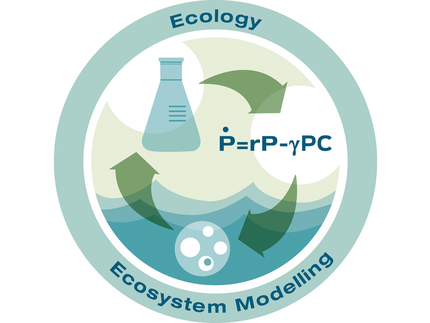Meta communities, dispersal and local adaptation
Contact persons: apl. Prof. Guntram Weithoff, Victor Parry, Julia Pawlak, Katrin Kiemel
Populations are often spatially separated with a limited exchange of individuals between sites. This holds particularly for aquatic populations in lakes, living on “aquatic islands” within a sea of land. An example of such isolation are small water bodies such as kettle holes within a landscape or even more isolated very acidic and rare mining lakes. As a result of spatial separation (isolation), local adaptation of populations is favored. However, even plankton organisms have the potential to disperse over longer distances either as active stages through water birds or as resting stages by wind dispersal. Such longer-distance dispersal enhances the gene exchange between distant populations. Although some of the dispersal routes are well-known, there is a large gap in the knowledge of the quantification of the dispersal. The aim is to understand the mechanisms behind zooplankton dispersal on a landscape scale.
We study the distribution of plankton organisms (rotifers and cladocerans) and specific genotypes on a local (county) and regional scale. On the local scale, we investigate a set of kettle holes (small ponds) in an agricultural landscape, where we investigate the dispersal, local adaptation and genetic structure of the populations (see also BioMove). On the regional scale, we study the ecology of various strains and species from the Brachionus calyciflorus species complex. One key parameter is the thermotolerance and how it is regulated on a genetic basis. To achieve this goal, we combine ecological methods on thermotolerance with modern genomics.
On a smaller study scale, we study the individual movement behavior of zooplankton in response to environmental stressors or predators using video analysis.
The work is funded by the German Science Foundation (DFG) within the Research Training Group BioMove and by the University of Potsdam.
Publications:
Colangeli P, Schlägel U, Obertegger U, Petermann, J, Tiedemann R & Weithoff, G. (2019) Negative phototactic response to UV-R in three cosmopolitan rotifers: a video analysis Approach. Hydrobiologia, 844:43-54.
Kiemel, K,Weithoff, G& Tiedemann, R (2022) DNA metabarcoding reveals impact of local recruitment, dispersal, and hydroperiod on assembly of a zooplankton metacommunity. Molecular Ecology. Open Access
Paraskevopoulou, S., Dennis, A, Weithoff, G, Hartmann, S. & Tiedemann, R. (2019) Within species expressed genetic variability and gene expression response to different temperatures in the rotifer Brachionus calyciflorus sensu stricto. PLoSone, 14(9) e0223134.
Paraskevopoulou, S., Dennis, A., Weithoff, G. & Tiedemann, R. (2020) Temperature-dependent life history and transcriptomic responses in heat-tolerant vs heat-sensitive Brachionus rotifers. Scientific Reports, 10:13281 Open Access
Paraskevopoulou S, Tiedemann, R & Weithoff, G. (2018) Differential response to heat-stress among evolutionary lineages of an aquatic invertebrate species complex. Biology Letters. https://doi.org/10.1098/rsbl.2018.0498
Parry, V, Schlägel, UE, Tiedemann, R & Weithoff G (2022) Behavioural responses of defended and undefended prey to their predator – a story from rotifers. Biology. 11:1217 Open Access
Weithoff G, Neumann C, Seiferth J & Weisse T (2019) Living on the edge - reproduction, dispersal potential, maternal effects and local adaptation in aquatic, acidophilic invertebrates. Aquatic Sciences. 81:40 Doi:10.1007/s00027-019-0638-z.

